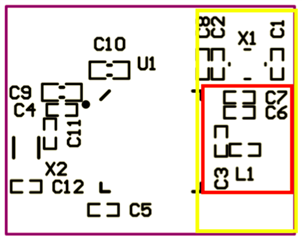Hi,
looking to nRF52832 reference PCB designs I've noticed that BOM contains different element sizes for different packages. Such, most of capacitors for QFN48 have 0402 footprint, when WLCSP suggests 0201. The same for crystals. So I'm thinking about saving some space with smaller packages.
It's reasonable to avoid extra work recalculating the matching network and keep it intact. Also, replacing the 32MHz crystal (which itself is of the same footprint) capacitors won't really change anything:

But how about other elements? Would it be safe to follow WLCSP BOM as a packaging guideline?
Also, for my understanding moving them won't affect RF performance, right?
Thanks!

